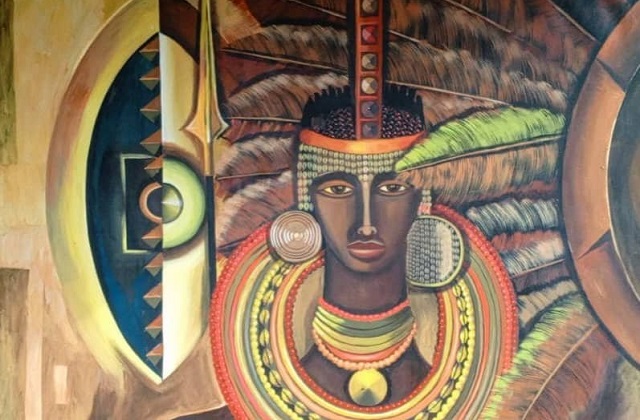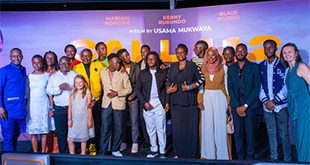
The two man show features Paul Lubowa and Samuel Kakaire’s paintings which explore the benefits of unity and cultural integration in the contemporary times
ART | DOMINIC MUWANGUZI | What would one expect of two artists from different artistic backgrounds and cultures? The answer is a showcase of diversity in artistic approaches on canvas. This is exactly what is showcased in the two man’s show Appointed Times, by Lubowa Paul a senior lecturer at Margaret Trowel School of industrial and Fine Art, Makerere and Kakaire Samuel an artist who trained in Russian iconographic art at the Higher College of art and indusial design, St. Petersburg, Russia and is a full- time artist. Both artists use their art to interrogate the social cultural aspects of their day to day life experiences contextualized within their respective cultures. As such, Lubowa’s colourful imagery including a bright and harmonious palette with slender female figures is an allusion to the cultural vibrancy of Buganda Kingdom, which the artist bare allegiance to. Similarly, Kakaire’s rustic imagery on canvas is reflective of Eastern Europe and African traditional artistic forms of expression. Therefore, the exhibition explores the concept of unity and cultural integration that runs through the artists artworks, and by doing so, invites deep conversations on how significant these two themes are in contemporary society.
Lubowa’s stylistic mode of painting fusing realism, abstract and cubism styles of painting into one not only suggest an artist who intent to explore a diversity of techniques on canvas, but illustrate his keen interest to use his art as a tool to unite the different types of audiences which encounter it. More so, the subject of unity has been frequently re-echoed by the Buganda Monarch, as one of the pillars to build a strong Kingdom. As a true subject of the monarchy and front runner of cultural preservation, the artist perceives this call as his obligation to promote this togetherness through his paintings. Such responsibility is illustrated the in a series of paintings which depict the female figures sharing a multiplicity of roles. The figures are often portrayed performing household chores together, at cultural or social festivities as a group. Often presented in groups or paired, their presentation in such a format conjures a message of togetherness which speaks to the subject of building cohesive societies. According to the artist, unity does not erase individuality but weaves into it as a harmonious whole, like a symphony where each instrument adds to a collective sound.

Conversely, Kakaire’s grandeur paintings confront the subject of cultural integration primarily with their celebration of two cultures- Eastern European and East African cultures- on the same surface. The ability to fuse both cultures is symbolic to the artist’s appreciation that no culture is lesser or more powerful than the other. Equally, such fusion is critical for social cultural preservation and development within the contemporary times. Within the scope of his diverse artistic exploration, Kakaire’s theme of integration portrays a balance between individual cultural identity and communal harmony. This is reflected in the way the artist selects particular cultural motifs like the shield, beads, spear and African masks and blends them with elements of everyday life to create an exciting but also ambiguous aura in his work. A first hand encounter with the paintings invites excitement in the viewer because the work combines the traditional and modern elements of art making executed with such finesse. Yet a deeper interaction will reveal the artist’s intent to communicate the intricate differences in the different norms and traditions of cultures that are delicately woven into one rich tapestry. In this, the artwork boldly emerges as a metaphor for co-existence.
The coming together of two artists from different artistic backgrounds, practices and cultures in this exhibition is a testament to how important it is to co-exist, regardless of the artificial boundaries society may impose on us as humans. It is also an important lesson on how much can be realized when two individuals representing two cultures or philosophies come together. Though the two artists had never met physically before, their first time to meet courtesy of this exhibition, sparked interest in each other’s work and it can only be hoped that more of such collaboration shall be realized by the two artists in the future. Therefore, Appointed Times, beyond its navigation of the concept of unity and cultural integration, offers us opportunity to look beyond our respective divisions- cultural, gender, education or age- to create a diverse and harmonious community where we all can belong and thrive.
*****
The exhibition Appointed Times is showing at Umoja Art gallery, located on Mukalazi close, Bukoto, next to Kampala International School, Uganda.
 The Independent Uganda: You get the Truth we Pay the Price
The Independent Uganda: You get the Truth we Pay the Price



